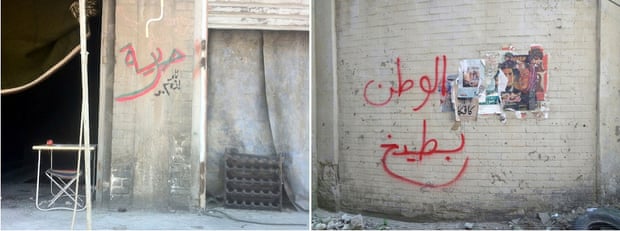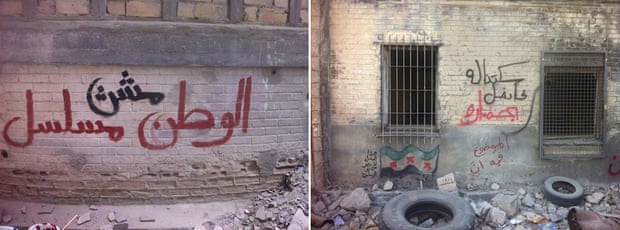http://www.sadmag.ca/news/2015/07/interview-qaf-artist-coral-short/
Interview // QAF artist Coral Short
When I first met international Queer performance artist Coral Short at the Queer Arts Festival’s opening art party, she was wearing boxing shorts and a determined expression. Donning her gloves, she walked onto stage and began to perform her opening piece, Stop Beating Yourself Up, a literal boxing match fought entirely–and mercilessly–against herself. When I met Short a few days later for our interview, she was a radically different person. Relaxed, smiling, and as I discovered later, a little concussed, Short was nothing like the fierce fighter I remembered from a few nights ago.
As we talked performance, meditation, and travel over afternoon coffee, I realized that Short is actually both of these people: open and friendly, but also strong and, honestly, intimidating. Despite her gentle nature, Short clearly has no problem being ruthless when it comes to what really matters: creating powerful, boundary-pushing art.
SAD Mag: You first performed Stop Beating Yourself Up in 2013 at Edgy Women in Montreal. In a recent interview with Daily Xtra, you said that you chose to add some modifications to the piece for this year’s performance: decreasing the length from the original three hours to one and keeping a paramedic on hand. Why did you choose to perform the piece again, if it was so damaging the first time?
Coral Short: I actually never wanted to do this piece again, but Artistic Director SD Holman, through the General Manager, Elliott Hearte, really wanted me to do the piece and offered to fly me out here. And my little sister Amber just had a baby–the first baby in the Short family, so I said, “Okay, I’m going to do this for this nephew.”
SM: You mean, beat yourself up for her child?
CS: Basically! After [the performance] I sent my sister a text that said, “This will make a good story one day, but my head really hurts.”
SM: Did you get anything new out of repeating your performance? Has your original intention or relationship to the piece changed since 2013?
CS: I think it did. The first time I did it, I didn’t do it with full body awareness. Since that time I’ve been to three vipassanas–ten day silent retreats–and I have a daily meditation practice. Being more inside my body than I used to, [the performance] was more impactual on the cellular structure than it did originally. Each time has been a ritual, but I think this [time] was more like a closure: “I will stop doing this now–stop doing this very literal performance–stop beating myself up.” We all need to move forward from this internal struggle, myself included!
It’s also really, really hard on the audience. This performance, people are more with me than any other performance I’ve ever done. They’re horrified, but they’re with me. There’s blood spurting out of me, but people try to stay the course with me. Psychologically, it’s really hard on people. I can’t make eye contact with them, so I have to look at the wall or the cameras or the floor. I’m a channel for the audience–a visceral symbol for the struggle inside themselves.
They want to protect me–they want to stop me. But no one does. When I first did the piece in 2013, I was asked by my curator, “What if someone stops you?” And I said, “It will just become part of the piece.” But no one stopped me then, and no one stopped me now. I think the audience becomes transfixed with a hypnotic morbid fascination.
SM: Do you think that’s because it’s art, or do you think that’s just human nature?
CS: I think there’s a “This is art” thing going on. But, I think if someone would have tried to stop me, I would have stopped. I think all it would take is just one person.
I think people almost want to see it play out. If you look back across humanity, or to Game of Thrones, there’s always been a love of fighting and blood. The fighting pits, the colosseum, the beheadings –I think there’s an element of humanity that wants to see that. Blood is powerful.
SM: In addition to performing at the festival’s opening party, you also curated a film night this year called TRIGGERWARNING. How did you find the “fearless Queer video art” for that event?
CS: I travel a lot. I have about ten home bases. I move with a lot of ease in the world due to the privilege of being a triple passport holder. I have all these different communities that I have lived and worked in, so I meet so many more creators than the average person. While I’m moving, I talk to other curators, interact with other festivals, other artists, everywhere I go. I come across incredible filmmakers some of whom I have been working with for almost a decade. I’m part of a huge Queer network of cultural producers in Asia, North America and Europe who I can reach out to at any time on the internet. We are all there for each other.
SM: And how did you choose which ones to include? What qualified the videos as too triggering–or not triggering enough–for the event?
CS: It’s actually really hard to find triggering work. I cut out pieces that I found problematic in terms of race and trans issues. I didn’t want anyone to feel unwelcome in the space. In the end, I created a bill that I felt comfortable with and I felt other people would be comfortable with, but there were definitely pieces that push the limit in terms of sexuality.
SM: Were there a lot of strong reactions?
CS: Well, actually it’s funny, I feel like my bill was not triggering enough. Perhaps I have to try harder! There was blood and piss and someone kissing their parents and performance art on the verge of self harm. But it was a fine line, because I didn’t want to make anyone feel so uncomfortable that they would walk off in a bad state alone into the world.
SM: What’s been your experience as someone who works both with film and performance? Do you think people react very differently to the two art forms?
CS: I think people are wary of performance art, because they feel that it’s an unpredictable medium–which it is — that is the joy of it! A lot of my video curations make performance art more palatable in a way. And video makes it possible to get all these artists with dynamic personalities from different locations on one bill. That’s why I love video: all that talent within three minutes. It’s amazing. For example: Morgan M Page, Eduardo Resrepo, and local artist Jade Yumang.
SM: In that same Daily Xtra interview, you refer to Vancouver culture as “very PC compared to the east coast,” and in another interview with Edgy Women, you describe Montreal as “one of the few remaining metropolises that is affordable to live cheaply and create art.” Vancouver culture receives a lot of this sort of criticism–among the well known, of course, is the Economist’srecent inclusion of Vancouver in the list of “mind-numbingly boring” cities. Do you think our attitude will ever change, or are we forever doomed to be small-minded, unaffordable and ultimately, boring?
CS: I feel like the Vancouver art community is thriving these days! There’s been a much needed show of city support: a bunch of money given to VIVO and the art organizations in that area. There seems to be some new stuff happening; there’s always some great work. I always like to find out what’s happening here–who the new upcoming artists are, like Emilio Rojas, Helen Reed and Hannah Jickling.
SM: Obviously you’re familiar with the theme of this year’s festival: drawing the line. As a performer and artist, you’ve crossed many lines: from hole-puppet protests to physical self-abuse, you don’t seem afraid to “go too far” when it comes to your craft. This might be cliche, but where (if ever) do you draw the line? And why?
CS: When I was a young artist, I used to repeat some kind of mantra that went something like this: to keep pushing through my limits to go to the other side. I really wanted that to be my work: to not be afraid of anything. Push it as far as you can go and then push it farther. That’s where it begins and where my practice has grown — when I take risks and walk my own path.
But my artistic practice has changed since I did vipassana. I’ve started to make places for people to sit down, because people want to relax; it’s a really fast-paced life. So I made a giant, portable nest. I give people rides with these brown, velvet cushions while they hold this egg, and they become very birdlike. People love to sit in it. I’ve also started making this incredible earth furniture that is opulently growing with plants on radical faerie sanctuary land in Vermont and at IDA. I’m building places for people to repose, relax and be comfortable.
- Photos courtesy of Nikol Mikus
SM: Is this experience of comfort something you’re trying to communicate in your art? Is that your intention?
CS: I think it just kind of happened. I have almost 15 years of sobriety, and each year I grow into my body and cellular structure a little more. That’s coming through in my work. It’s all tied into meditation and slowing down. The Queer scene is soaked in substances and lack of self-awareness, so living inside our bodies as queers is revolutionary. Self-love is radical.
The Vancouver Queer Arts Festival runs from July 23 — August 7. Event listings are available on the festival website. For more information about Coral Short, follow her on Twitter and Facebook, or visit her website.


